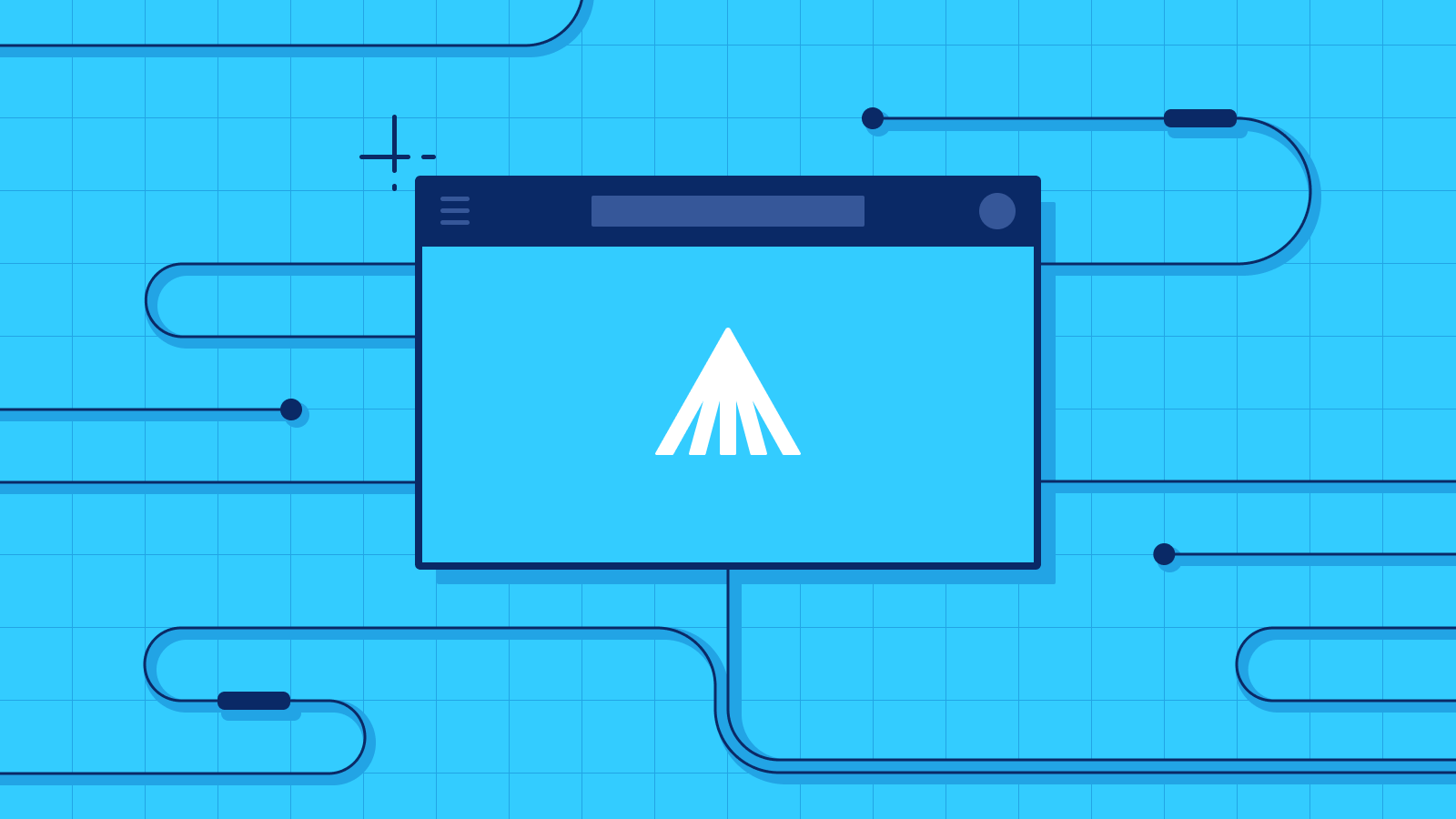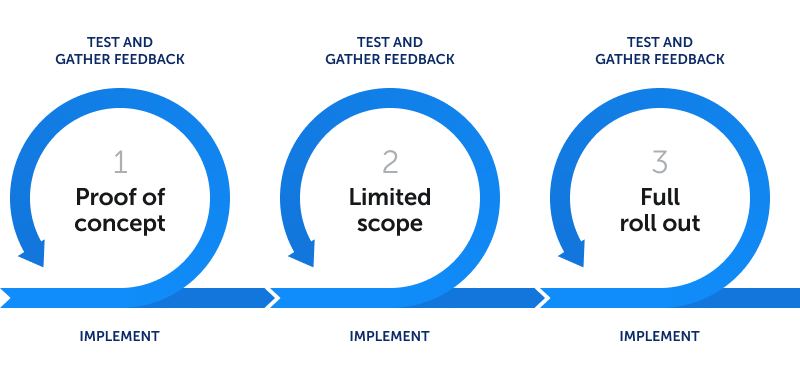3 ways to get started with Valamis
Companies now realise the importance of integrating content into their learning strategy but introducing a new learning platform into an organisation is still unknown territory for many. Launching a new…

Companies now realise the importance of integrating content into their learning strategy but introducing a new learning platform into an organisation is still unknown territory for many.
Launching a new platform takes effort and resources, such as time and money but also strategic planning and content are crucial.
Integrating learning as a part of a company’s culture, when done well, is a great opportunity to not only get improved company performance, but also happier employees.
Valamis is a complete, modern LMS platform that can bring your company’s learning into one interface, combining productivity with engagement.
This means that we have a flexible learning platform that can fit with different types of companies and use cases and has capabilities to adjust and grow as your learning strategy develops.
But in practise how do you get started with Valamis? What do you have to consider for a successful launch?
Let’s take a closer look…
Planning is the Basis of Success
1. Planning your digital learning
The importance of understanding the company learning culture and your company’s L&D maturity first, before deciding on your Learning Strategy, cannot be emphasised enough.
Without being aware of the attitudes of employees and leadership, the capacity of learning, what specific issues influence your learning culture, and in general what the maturity level of learning and development is, it will be difficult to predict whether a learning strategy will be successful.
How do employees learn best, do they learn best online and how do they find the time for this? Or does learning in a group fit better? And if they already have experience of organisational learning, what have these experiences been?
Conducting research and discussing learning with your employees helps a lot to get this important information and the use cases that you’ll need to consider.
Tackling any issues that you find before starting to plan, is a crucial step to avoid wasting time, money and avoiding frustration before launching a new learning platform.
As an example, it’s quite common for companies not to officially announce how much time is allowed to be spent on learning each month. This can result in some people not feeling comfortable about spending time on personal learning.
If managers aren’t guided or instructed on how to support learning and encourage their team, this can also have a major impact. By making these topics open to discussion, agreeing on the hours on a company level, and helping managers with how they can be supportive, time spent on learning can be increased.
There are many ways to help you prepare your learning strategy. You can find useful content on our website to explore different topics, such as the L&D Framework or other whitepapers or publications.
Additionally, this practical empirical case study Supporting employee skill development from organisational perspective provides a framework to bridge gaps between the learning strategy and learning culture.
2. Translating strategy into requirements and roadmaps
Once you’ve created a learning strategy for the company, it is time to become more practical and get into the details by defining your requirements. These need to be discussed and synced with Valamis’ roadmap in order to create realistic short- and long-term plans.
Next to market research, we love discussing timely topics, requirements and plans with our leads and customers, which can all influence what will be added to our roadmap.
Over the years, we noticed that many customer requirements and needs overlapped, which helps us with prioritisation and decision making. In some cases, requirements are customer-specific, and then more discussions are needed in order to see how and when something fits on the roadmap.
When all of the requirements have been defined and discussed, it is easier to decide which learning solution is the right one for your company. This depends on the topics discussed earlier, and on how you will want to use Valamis.
Other questions to ask at this point are:
- What kind of learning analytics do you need?
- Do have KPIs connected to your learning goals?
- Do you need integrations with other services?
- How do you create your content?
- Are you interested in eCommerce?
- Do you need a mobile app as part of your learning strategy?
As an end-to-end learning ecosystem, we provide different services and features, and you can either start with the basics and then scale it up, or you could start selling your learning content with the eCommerce package, or opt for our most flexible package that adds customised development and reports on top of the Engage and eCommerce features, as well as advanced analytics.
Getting started with Valamis
After the preparation work, setting a learning strategy, having requirement and roadmap discussions, and deciding on the package, Valamis can be launched.
There are three approaches to how to do this. Do you already have a learning platform in use? If not, then you’ll be starting from scratch. Or you may have an existing learning management system in place but just want to add more functionality and thirdly, you would like to switch completely to a new platform that offers better functionality and user experience.
1. Starting from scratch
When your company has never had a learning platform before, a good way to introduce Valamis is in steps.
Planning and creating learning content by yourself is a big job and likely to be easier to start with some specific areas, such as onboarding or compliance training rather than to try to have a huge amount of content available from day one. Or, you can add content integrations, to make learning content available for your employees.
As it will be a learning experience for everyone, keeping the functionality and data simple in the beginning will make it easier to use for the employee but also for admins, managers and leadership in relation to data analytics and content creation.
Starting simple, learning and then slowly adding new features, by building the environment in stages, has proved to be a good way to learn and grow together in a company.
2. Enriching your current learning system
But what to do when your company already has a Learning Management System (LMS) but it is not powerful enough to fulfil the needs of the company?
In this situation, Valamis can work alongside your existing system.
There are a few options here but making the two systems work together via an SSO login is the first step. This means you only need to log in once, with one ID and password, to access either of the systems.
Valamis offers support for integrations, collecting data, and statistics.
The second step is to decide:
- will you keep your users in your LMS and import Valamis content and data to them? or
- will you use the Valamis UI but keep the content from your current system?
For example, if you only need to get better statistics, you keep your current system in place but use the Valamis Learning Record Store to improve stats.
If you want to focus on a better user experience and engagement plus offer a complete solution to your learners and content creators, it may be better to use the Valamis interface as a hub bringing content from your current LMS, integrations and analytics all together in one place.
3. Replacing the old learning system
Finally, you might have a learning platform in use, but the company wants it replaced completely, either because it hasn’t delivered on expectations, or the organisation’s learning culture has outgrown the platform and decided to move forward.
In this case, employees already understand digital learning to some extent and your company most likely has some clear ideas on where to improve and what to do differently next time.
Valamis can help you plan a smooth transition, a unified user experience and data architecture, taking key stakeholders’ needs and wishes into account.
After that, we’ll get to work on the data and content migration from the old system into Valamis.
Note: There are some prerequisites for content migration, which should follow eLearning standards such as xAPI or SCORM. Data migration of (for example) user data, can be imported by using our tools, such as the CSV uploader for data or via SCIM and other APIs.
After we’ve agreed on what will be migrated and made a plan we’ll start working on the migration in phases testing and checking as we go to ensure it’s a smooth process.

Example of migration process
More tips for a successful start
Introducing a new learning platform to your employees, content creators, team managers and leadership can be a big undertaking. Adding functionality and integrations iteratively, therefore, by implementing functionality in a smaller group, then testing, gathering feedback and learning from it, can help to make this process easier.
Remember that learning platforms are still about people: how they learn, making learning a positive experience and learning from each other. Content is therefore vital for a successful learning strategy.
Find out who your Experts are and ask them to create content so they can share their valuable knowledge with the rest of the company. The knowledge that your company has available internally, is usually exactly the content that is needed for certain teams, for certain times and for new employees.
Make sure you have the right content on a company level but also for specific smaller teams. Content, that not only supports the direction of your company strategy but also makes everyone excited to come back to learn.
Valamis has lots of features available related to content authoring, personalised learning, skill and knowledge management, social learning, learning analytics, mobile learning, eCommerce, External Services and Admin tools, as well as a variety of integrations. These can be a huge asset when starting out and to give a great first impression.
Whether you start from scratch, replace your old system or enrich your current learning system, our team of learning consultants, technical experts and UX designers are ready to guide you through the whole process from start to finish and help you to set up the right package or the right functionality for your company.
You can make your first step today by contacting us, we would be happy to hear from you.




